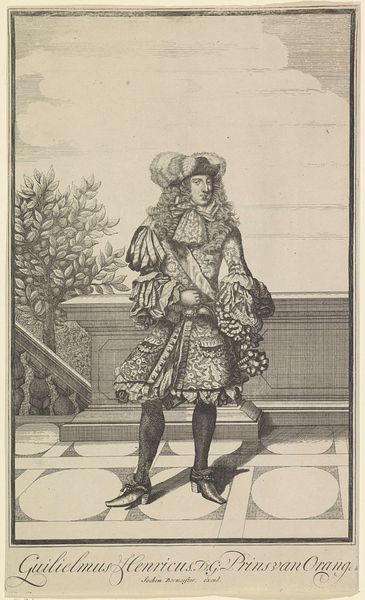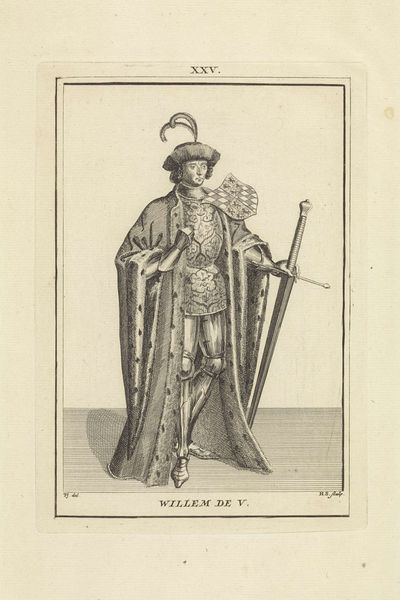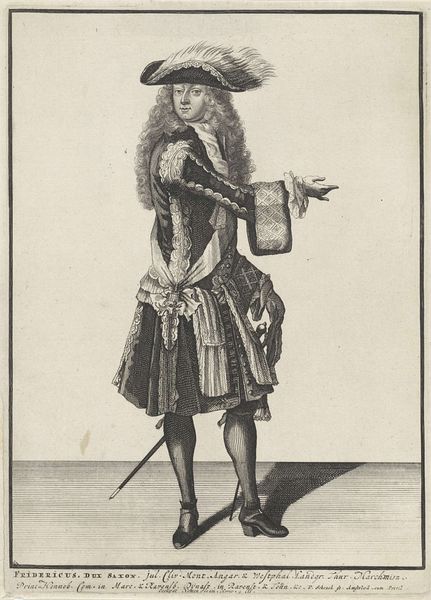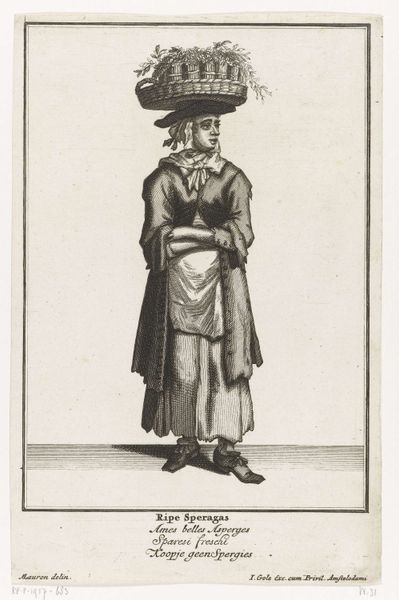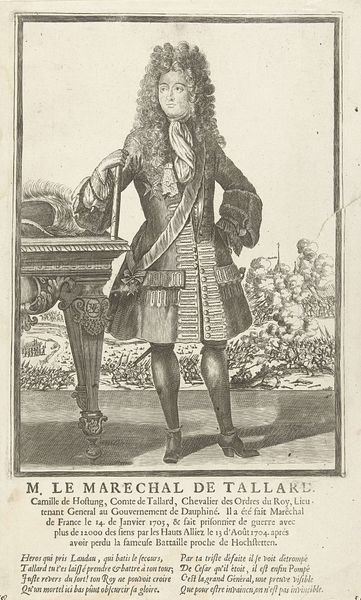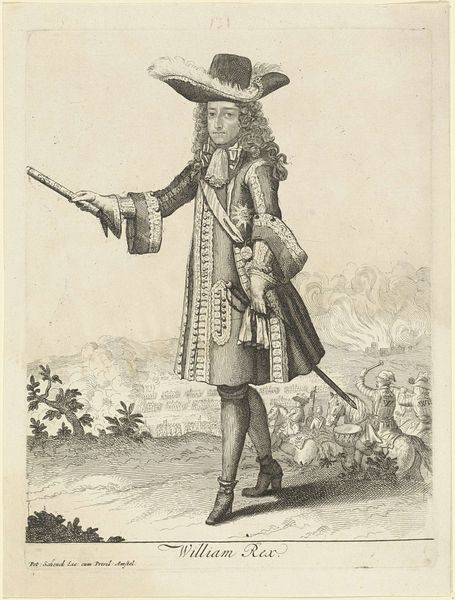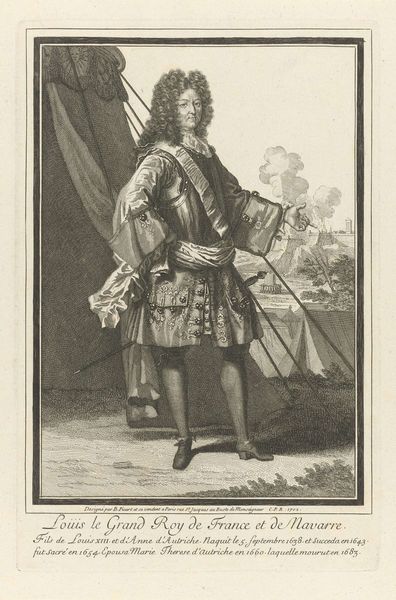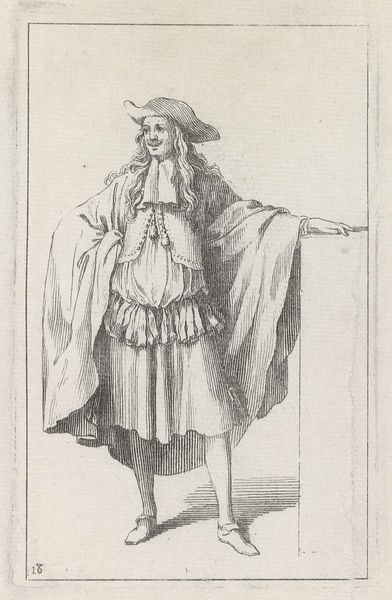
engraving
#
portrait
#
baroque
#
old engraving style
#
figuration
#
line
#
history-painting
#
engraving
Dimensions: height mm, width mm
Copyright: Rijks Museum: Open Domain
Editor: This engraving, "Cavalier en Manteau," by Henri Bonnart, dating from around 1687 to 1690, has a really theatrical feel. The gentleman's elaborate attire and sweeping cape just scream power and performance. What do you see in this piece? Curator: Beyond the surface level display of wealth and status, this engraving offers a glimpse into the construction of masculinity within the Baroque era. Consider the carefully posed body, the flaunted attire; these elements worked to establish social hierarchy, positioning this figure, undoubtedly a member of the aristocracy, above the common citizen. Do you see how this idealized representation served to reinforce existing power structures? Editor: So, it’s less about individual portraiture and more about projecting an image of authority? Curator: Exactly. This image, like so many others from the period, acted as propaganda for the elite. And let’s consider the ‘manteau’ itself. What does a garment that obscures and reveals simultaneously signify? It could be read as a visual metaphor for the ways in which power operates—both overtly and covertly. It’s also interesting to think about how these engravings were disseminated; they became accessible images, which could have also been interpreted differently across various social classes. Editor: It’s fascinating how a simple image of a man in a cloak can reveal so much about the social and political climate of the time. I had initially thought about only the surface-level, stylistic aspects of the work, but your insights have provided a valuable lens for analyzing art in the context of power dynamics and the construction of identity. Curator: And thinking about these aspects opens new avenues for questioning art, its production, and its effects on its audiences.
Comments
No comments
Be the first to comment and join the conversation on the ultimate creative platform.
